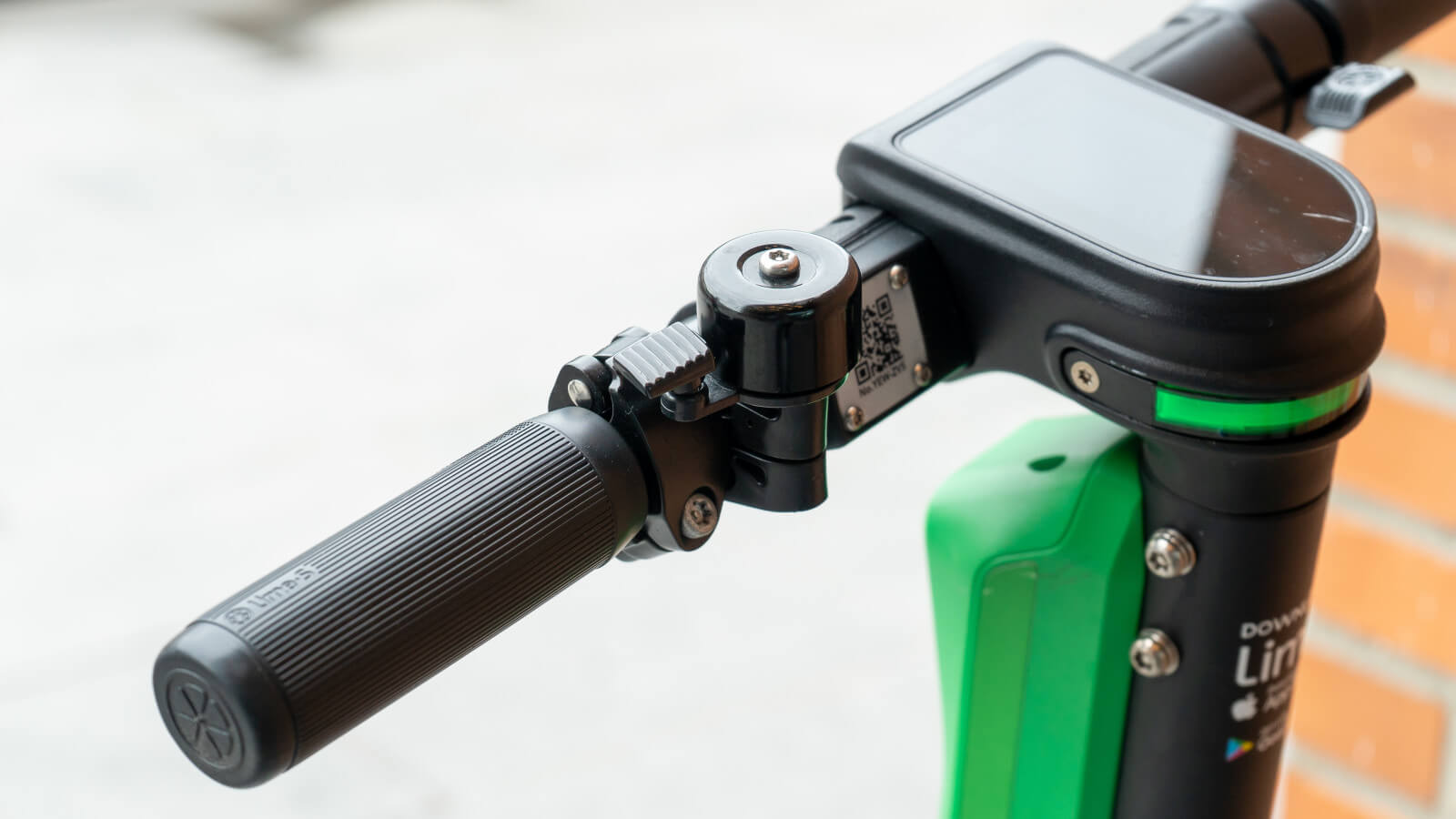
WE HAVE DESIGNED THE STUDY IN THREE STRATEGIC PHASES
In this phase of the project, we have done complete brand and stakeholder analysis. Also, we have conducted the major primary and secondary research in this part of the project.
The second phase of this study consists of analysing the research data. Focus on the finding based on primary and secondary research and a complete solution ideation process and application strategy.
In the last phase of this study, we have conducted a focus group workshop to examine our product solution and test with the real direct and indirect users for solution evaluation.
Research Goals
At the arrival of Lime scooter in Berlin, the user started using this service in daily basis to cover the last-mile distance. Riders during the day navigating on mobiles in their hands rashly one-handed riding in-between bike and walking tracks.
And a heavy usage past midnight after-bar/nightclub which creates a fun-ride activity and life hazard at the same time for drunk riders.
To find a solution in this overall ecosystem we have conducted qualitative research.
Research
We conducted 16 direct and indirect user interviews, multiple weeks observations, bodystorming and focus group session. Based on our qualitative research we created personas for direct and indirect users to explore the case further.
Our initial interviews found that direct service users are happy with currently provides service but the product and its service require an improvement to serve them better in terms of feasibility and viability.
Based on our observations and interviews on indirect users, we found out there is a major problem going on while the direct user is using lime scooters not only on bike lanes but also sidewalks and rider are parking scooters where they want and when they want. That is creating a major distraction in walking culture, bikes and traffic in downtown Berlin.
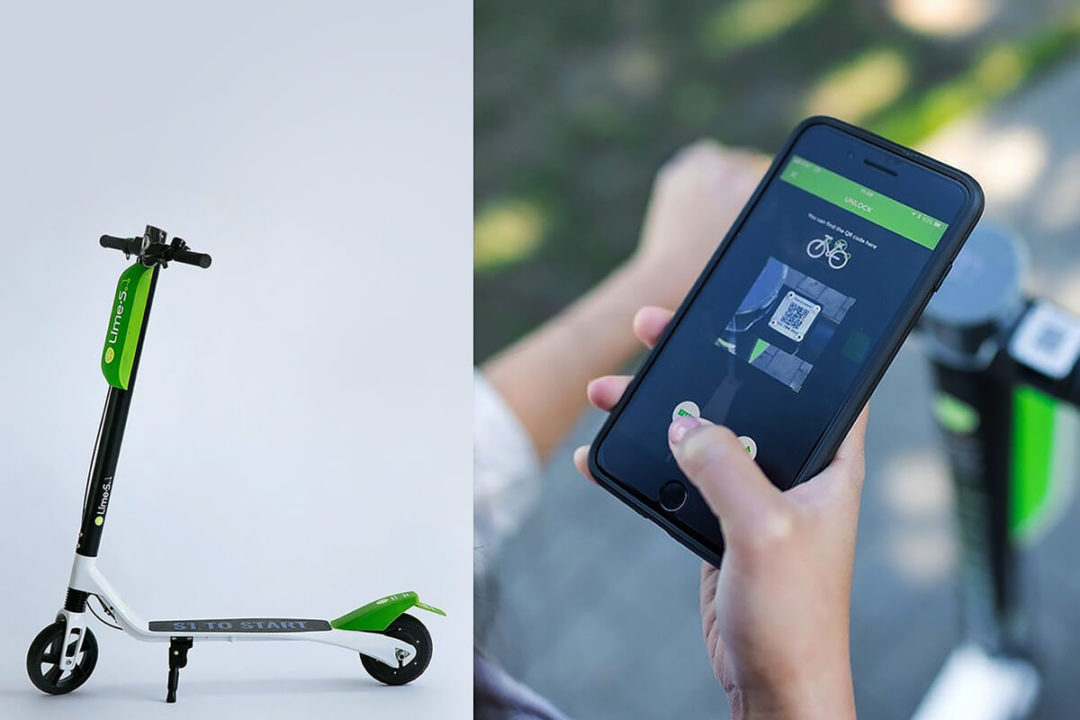
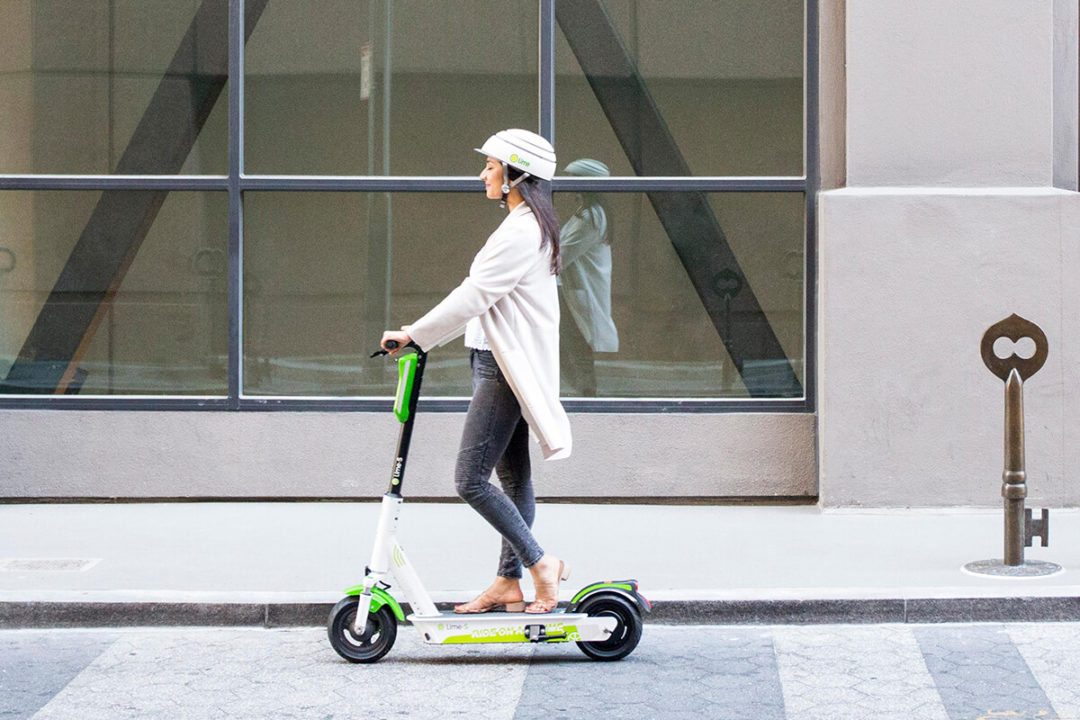
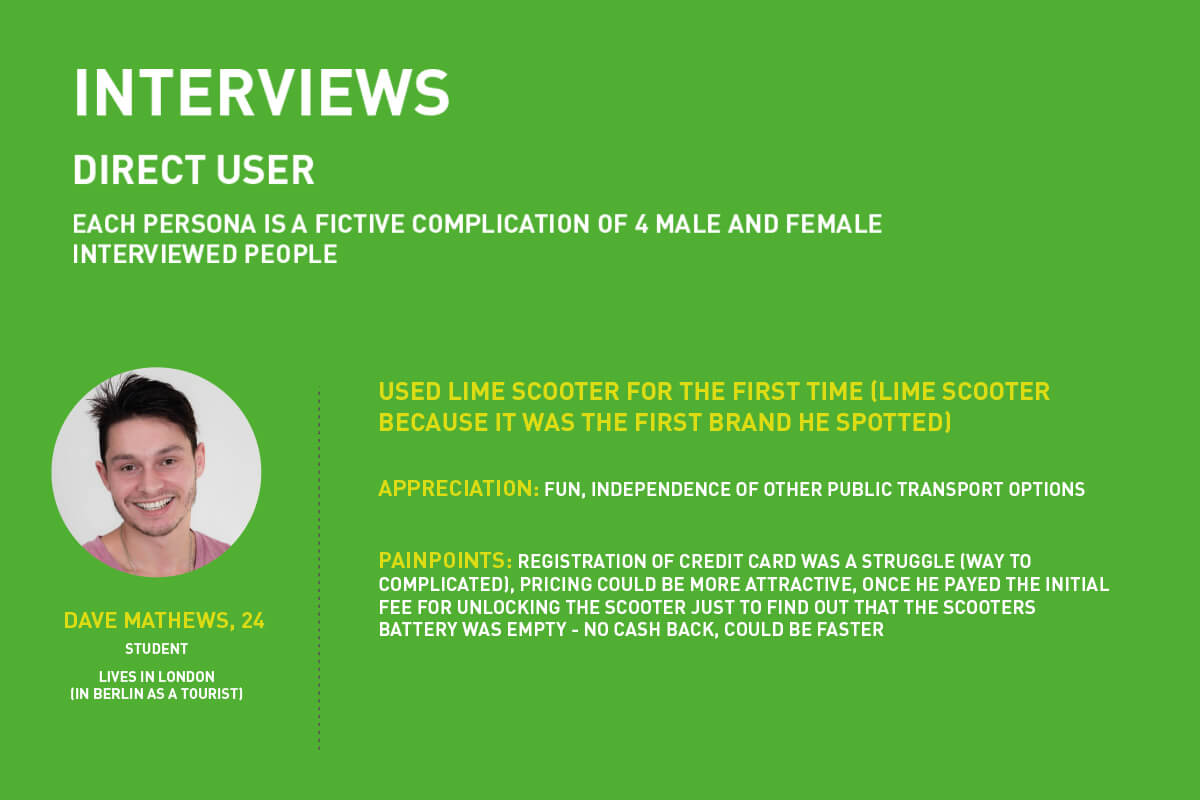
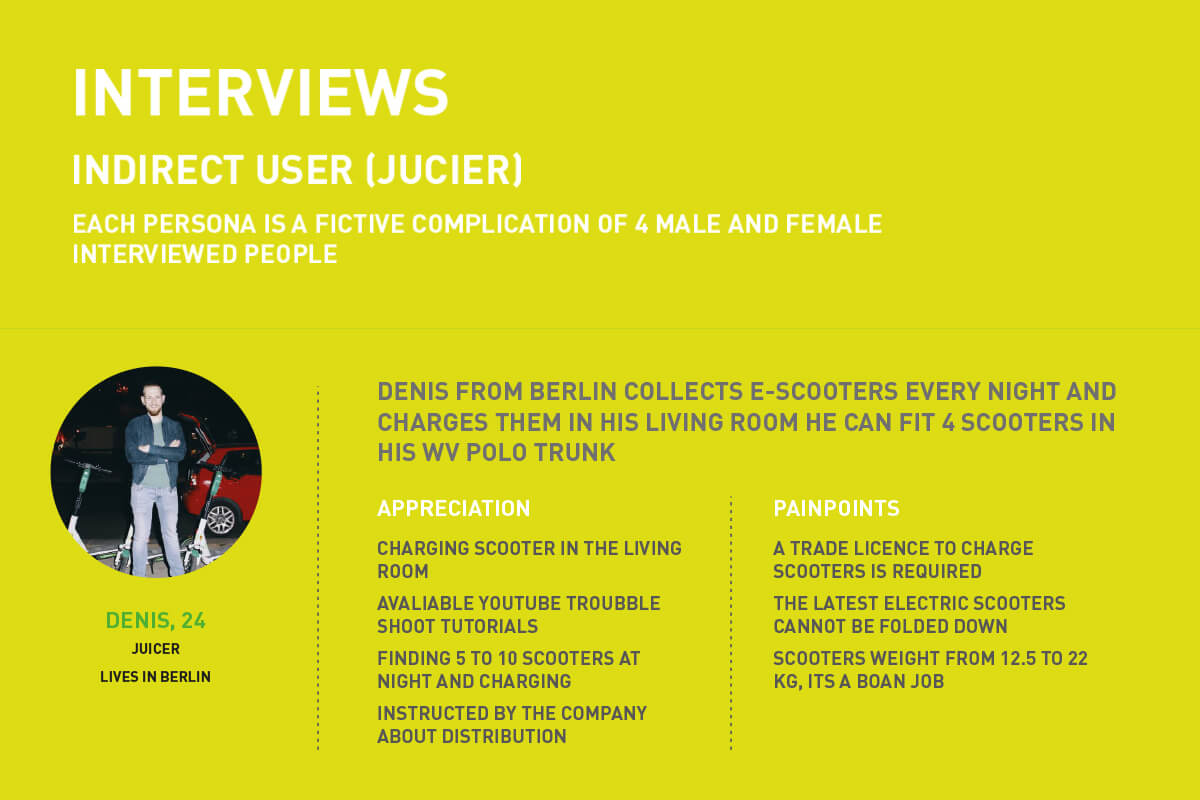
QUALITATIVE RESEARCH
We have interviewed 16 direct and indirect Lime Scooter users. With a set of open and specific product / service-related design questionnaire. That helped us create 4 personas to dive in the real problem finding and solution opportunities.
Observation research material was collected in 6 weeks time period during different parts of Berlin at time hours. We gathered some quality insights when users were using the service after-party fun rides and bike/walk lane rash one-handed riding while navigating on mobiles.
Also, we found out, frequently obstacles are blocking the dedicated trails, scooters are occasionally blocking the trails as well. User has no identification with the object and therefore does not care for the condition… Possible results are vandalism and misuse of the scooter.
We were curious to experience the service to understand the relationship between service user experience and indirect users like people walking or on bikes in their lanes. We have used the service and found out it’s quite difficult to ride the scooter and at the same time hold your smartphone for Google navigation. The product is designed to be driven by two hands to balance it, leaving one hand from the handle and diverting attention to a smartphone is a major risk to be in an accident.
In product solution testing, after finding the research-based solutions. We did a focus group workshop with 10 direct users. Research objective was solution testing with real user and get their feedback to iterate the solution process and have a concrete product strategy.
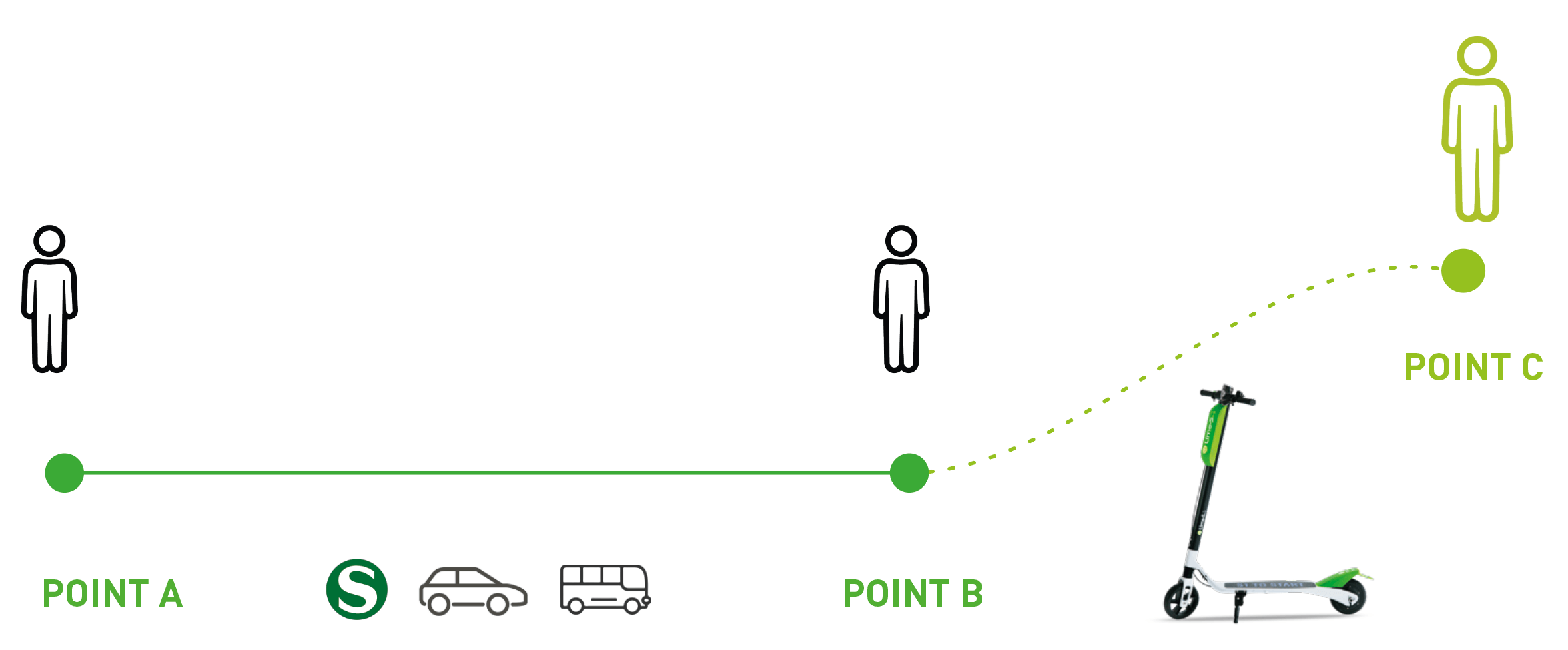
Our main finding for the service in Berlin is how people normally use the service in a perfect case scenario. Young adults and millennials are intended to use this service within the downtown for the last mile travel. After getting out from the public transport station or parking their car in the parking zone and instead of a quick walk to the point C.
RESEARCH-BASED USER JOURNEY

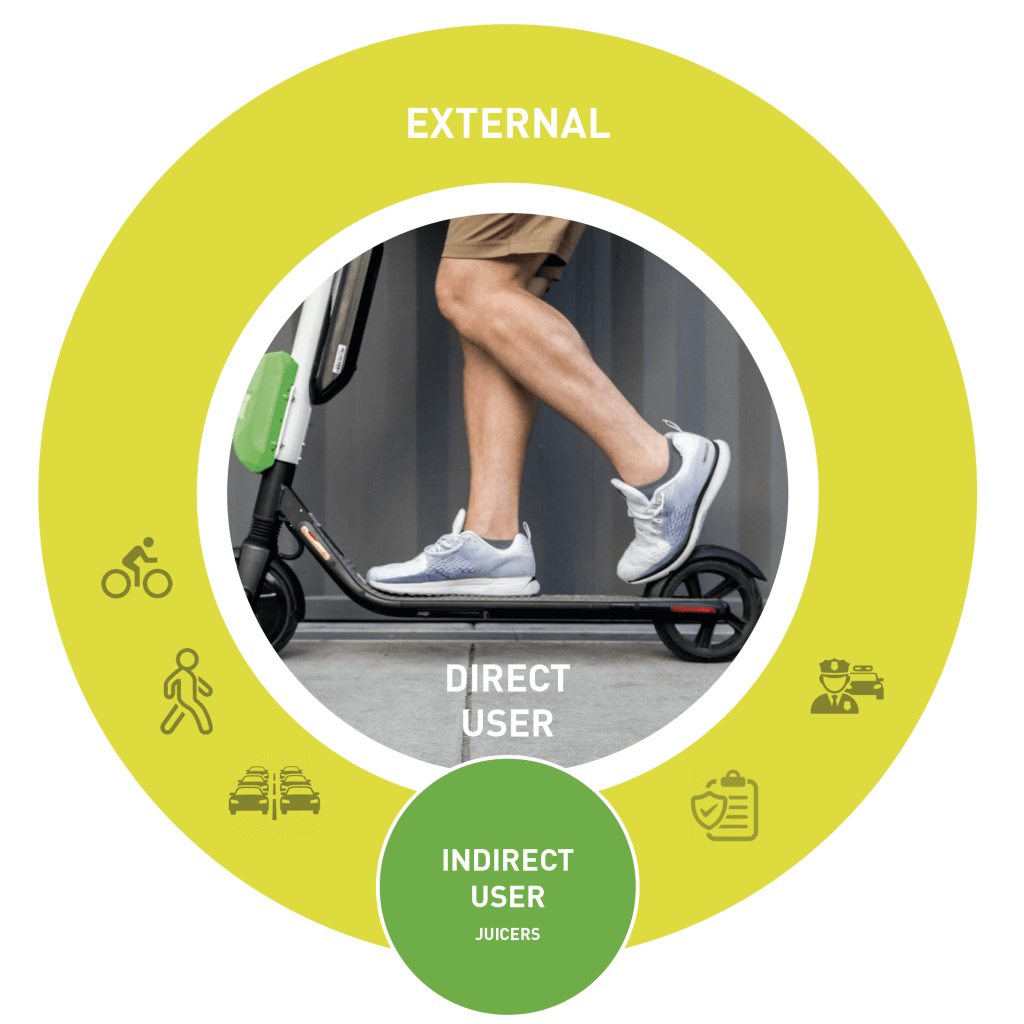
Research-based Conclusion and Product Solution
The study approaches to multiple findings in different directions. Although the study was done with a narrow-focused strategy, we found out there is room for improvement in the whole product line and service for direct users provide an improved user experience of Lime Scooter.
User experience needs to be improved with the introduction of the next-generation product line with enhancement on digital and physical touchpoints in user journey. Especially mobile attachments to hold smartphones and attached basket under the handle are few of primary physical enhancement solutions.
Study drove to further questions, as the company’s perspective success rate is high with 15,000 unique riders covering 58,000 miles successfully. On the other hand 87 investigations on drunk drivers, 16 people were seriously injured and 74 accidents by drink riders were registered in 2019. An alcohol detector is also likely to be one of the primary solutions to enhance the overall ecosystem.
